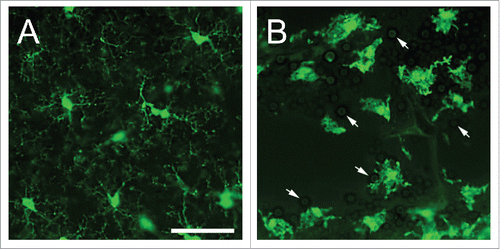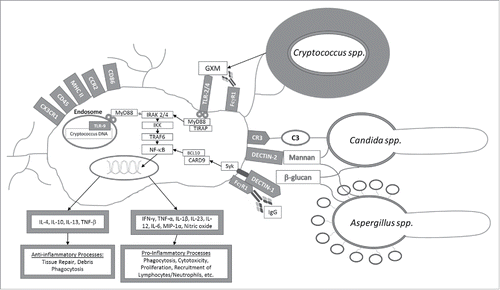Figures & data
Figure 1. States of existence of microglia. (A) Naive microglia in the neocortical region of CX3CR1-GFP mice exhibits delicate, branched processes oriented radially to a small elliptical soma. (B) Interactions of microglia with Cryptococcus neoformans strain H99 in a brain lesion of a CX3CR1-GFP mouse intratracheally infected for 14 days. Microglia became reactive or amoeboid or phagocytic-like in shape upon interaction with yeast cells (white arrows). During this phase, there is hypertrophy of the soma including shortened and fewer processes. Scale bar: 50 µm.

Figure 2. Microglial activation after interaction with opsonized or non-opsonized fungal antigens (e.g., glucorunoxylomannan (GXM) and β-glucans). Pattern recognition receptors (TLR-2/4, Dectin-1 and 2, CR-3, CD45, CD86, MHC II, FcγR1, CX3CR1 and CCR2) on the surface of microglial cells or intracellularly (TLR-9) recognize fungal antigens triggering effector signal transduction pathways eventually leading to NF-κB activation and the production of cytokine and chemokine production.

